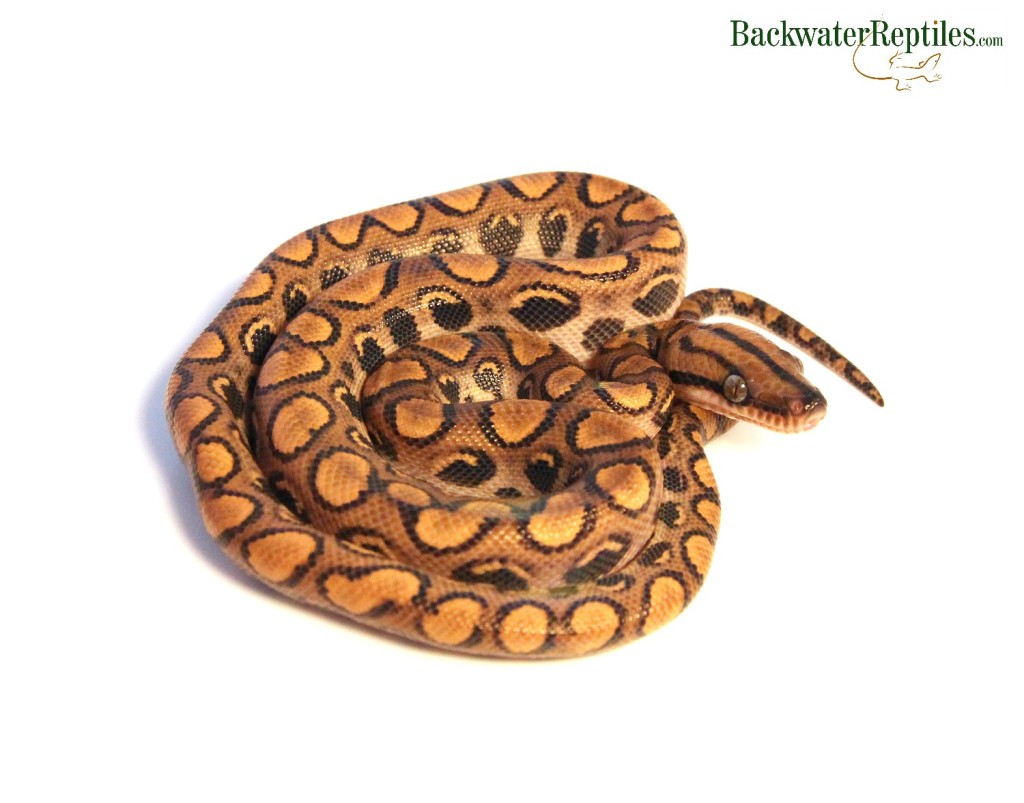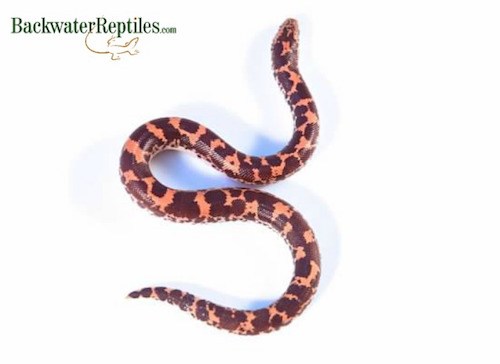Boas, pythons, and anacondas are all fascinating species of constrictor snakes. But do you know what makes them similar? What about what makes them different from one another?
In this article, we’ll discuss pythons, boas, and anacondas. We’ll cover what defines each as a species, how to care for each in captivity, and hopefully help you make an informed decision as to which species would work best as a pet in your own household.
Boas
Common Attributes and Traits of Boas
The group of snakes commonly referred to as boas all hail from the family Boidae. This family includes approximately fifty plus species of snakes that attain medium to large lengths.
The Boidae family is further divided into three subfamilies – the true boas (subfamily Boinae), the sand boas (subfamily Erycinae), and the dwarf boas (subfamily Ungaliophiinae). Each of these subfamilies possesses its own unique set of characteristics that sets it apart from the other subfamilies.
Boas are considered “primitive” snakes, meaning that they still retain a number of vestigial anatomical features.
Vestigial features of boas include the remnants of a pelvic girdle and vestigial legs, or cloacal “spurs” as they are more accurately described. The pelvic girdle in most animals consists of the hip bones and supports and attaches the legs, however most non-primitive species of snakes have evolved beyond this adaptation since obviously snakes have no use for it due to their lack of limbs.
Cloacal spurs are essentially the remnants of rear limbs. As you can surmise from the naming of this vestigial appendage, the spurs are located on either side of the snake’s vent or cloaca. They actually attach to the remnants of the vestigial pelvic girdle and thus are also commonly referred to as vestigial “limbs” although they are far from normal legs in terms of physical appearance.

Cloacal spurs can actually be used to help determine a boa’s gender. Males tend to have larger cloacal spurs than females.
Most species of boa are ovoviviparous, which means that they give birth to live young rather than lay eggs that hatch at a later date. This also distinguishes them from most species of snakes which tend to reproduce by laying eggs.
Keeping Boas in Captivity as Pets
Boas are very common pet reptiles with the most well-known species being the common boa constrictor (Boa c. imperator). They are known for their generally docile demeanors and they tend to acclimate well to human interaction.
Not all species of boas attain large sizes, however the common boa constrictor and other popular species can grow to be up to ten feet long. They also live for twenty to thirty years on average, so please be sure that you are able to care for such a snake before purchasing one.
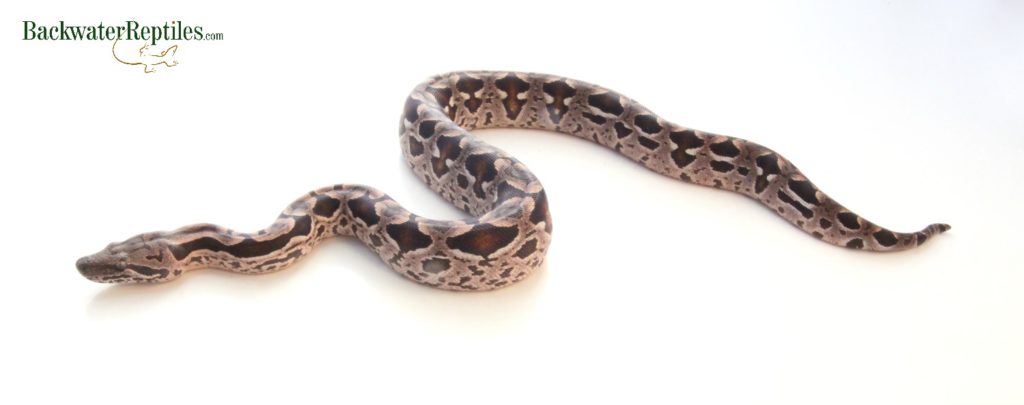
The housing needs of most boa species are relatively simple. First and foremost, you’ll need to be sure that the enclosure is large enough, particularly if you are not caring for a juvenile snake. You will also need a hide space, a water/soaking dish, appropriate substrate, and reliable heating source(s).
Like most snakes, nearly all species of boas kept as pets should be fed appropriately-sized mice or rats. Rodents can be purchased from pet stores and we prefer to feed our snakes frozen/thawed over live mice. It’s much simpler and safer for the snake as well.
Did You Know…?
-The Boidae family includes the largest species of snake in the world – anacondas. We’ve dedicated an entire section of this article to anacondas. Read on to find out more!
-All boas are nonvenomous. Rather than develop venom to paralyze or incapacitate their prey, they kill their food by constriction.
-Boas can be found worldwide in tropical and sub-tropical climates, however they are not present in Australia.
-Boas eat a wide range of food depending on the species. The most common diet in the wild for the majority of species includes small mammals (i.e. rats, mice, rabbits, squirrels, etc.), but they are also avid eaters of frogs, smaller snakes, and even lizards.
Pythons
Common Attributes and Traits of Pythons
Like boas, pythons are constrictors. They tend to be ambush predators who wait for a prey item to come along, lunge, and then perform their signature constriction.
Also similar to boas, pythons possess vestigial cloacal spurs (AKA vestigial limbs) and the remnants of a pelvic girdle. Feel free to refer to the above section on boa characteristics to refresh your memory on what purpose these vestigial organs serve.
Pythons tend to have slightly different frames than boas do. They have stocky, bulky bodies regardless of their length and size. Their heads are triangular in shape and they have serrated, backward-pointing teeth that aid in gripping prey. They also possess heat sensing labial pits that allow them to detect and capture prey more efficiently.
Another interesting trait of the python family is that snakes in this family have two lungs. This seems normal to us, but in reality, it is considered primitive as far as snakes are concerned because most snake species have evolved to only have a single lung.
We’ve established that boas give birth to live babies, but pythons do not. Pythons are oviparous, which means that the females lay eggs in order to reproduce. And pythons are actually pretty good mothers…at least until the babies are born. Once she’s laid her eggs, the female will coil around them to protect them, maintain proper temperature levels, and can even “shiver” in order to generate heat for her clutch if necessary. However, once the hatchlings have emerged from their eggs, the mother python will provide no further care.
Keeping Pythons in Captivity
Like most snakes kept as pets, pythons don’t require a lot of maintenance in order to stay healthy and happy. As with all large snakes, probably the most important aspect of their care is to be sure that the snake has a big enough enclosure that allows it to move about properly as well as feel secure and safe.
Some pythons are arboreal, while others are more terrestrial. Do your research when purchasing an enclosure for your own python and be sure that if you have a terrestrial python you are providing enough floor space. The opposite is also true if you have an arboreal python – you will need to provide more vertical space and items to climb on and wrap around.
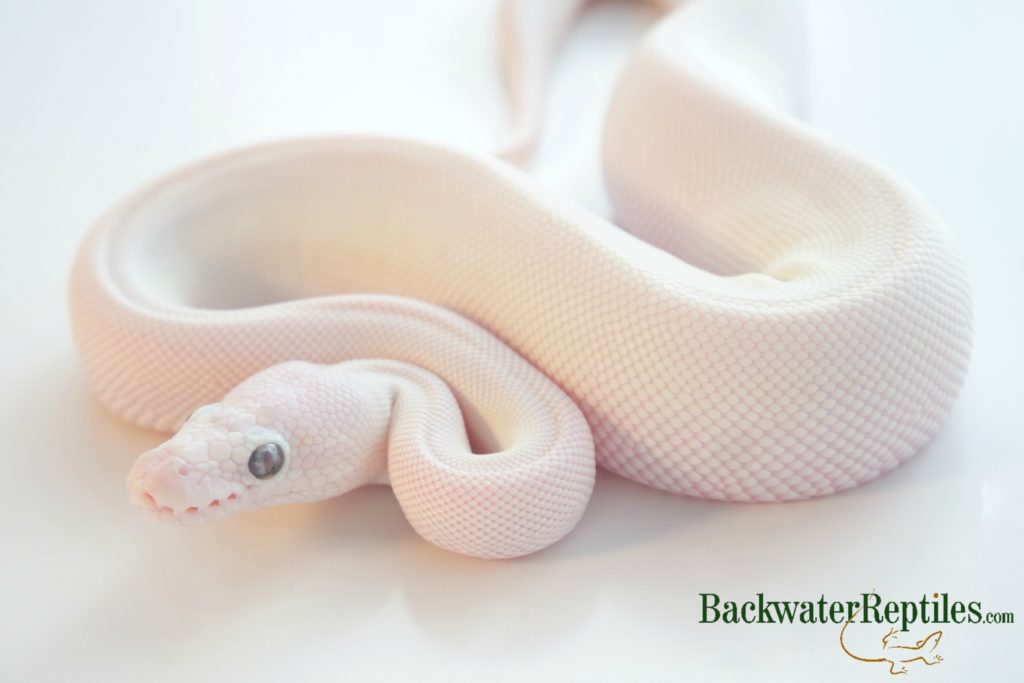
Pythons are pretty clean snakes, particularly ball pythons, so as long as you provide a good substrate, you should only need to spot clean as the animal defecates. A thorough cage cleaning should only be necessary once per month or every six weeks.
Just like boas, pythons will eat mice or rats in captivity. No vitamin dusting is necessary. But keep in mind that pythons can be pickier eaters than boas. Because they can be shy and secretive, you might have to feed your python live rodents instead of frozen ones. This will depend on the personality of your snake as well as what species you own.
Did You Know…?
-The reticulated python (Python reticulatus) can grow to exceed twenty feet in length. This is the largest species of python.
-The anthill python, also known as Australia’s pygmy python, is the smallest documented species of python. It usually doesn’t grow larger than three feet long.
-There are approximately forty documented python species all within the family Pythonidae. Also included in the python family are Mexican burrowing pythons (Lococemidae) and sunbeam snakes (Xenopeltidae).
-Burmese pythons are another very large species of snake that can exceed twenty feet in length. Due to being released into the wild in Florida, they have actually come to be considered an invasive species. They are a top predator and can even consume alligators!
Anacondas
Common Attributes and Traits of Anacondas
Anacondas are actually members of the boa family (family Boidae) and belong to the genus Eunectes.
There are four known species of anaconda – the green anaconda (Eunectes murinus), the yellow anaconda (Eunectes notaeus), the Bolivian anaconda (Eunectes beniensis), and the dark-spotted anaconda (Eunectes deschauenseei).
Anacondas spend most of their time in and around bodies of water where they ambush prey and constrict to kill it like boas and pythons.
Like boas, anacondas give birth to live young and are considered “primitive” snakes because they possess vestigial cloacal spurs and the remnants of a pelvic girdle.
Keeping Anacondas in Captivity
Because they can grow to such massive sizes, anacondas do not make great pets for most people. It takes dedication, space, patience, and knowledge to be able to successfully and safely keep a pet anaconda. We only recommend these snakes for experienced herp hobbyists who understand the extensive care requirements of these large snakes.
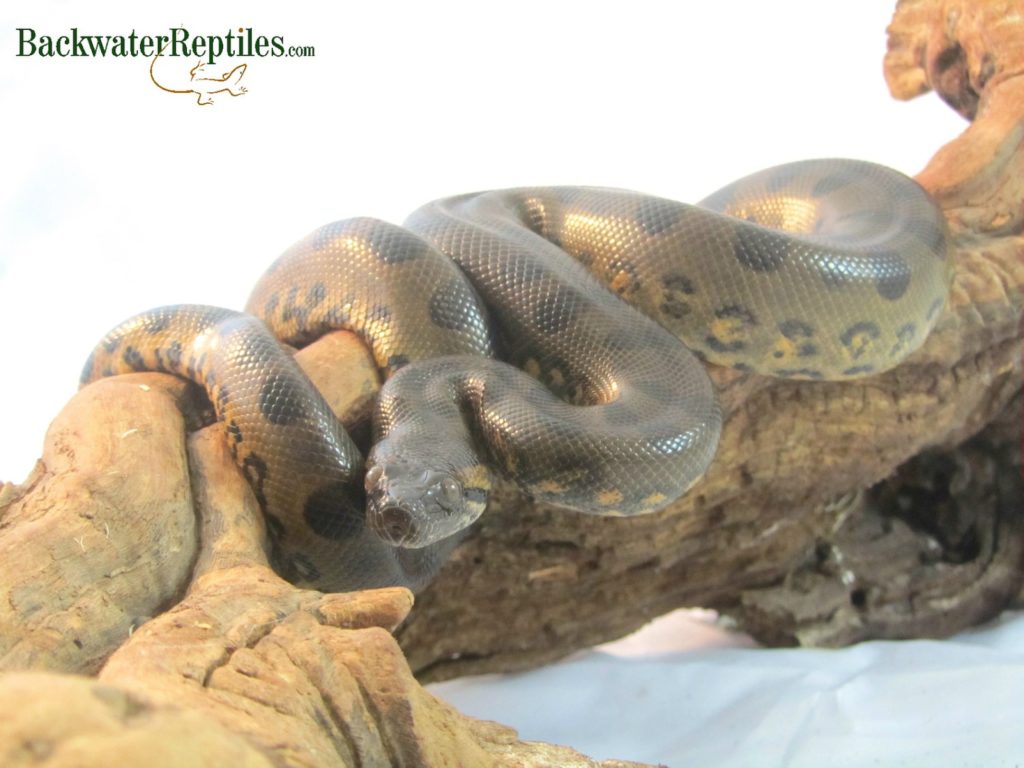
It is actually illegal to purchase and/or own a pet anaconda in many areas of the United States, so please do your research before buying an anaconda of any species. If you’re unsure of your state’s laws, be sure to check with your local fish and wildlife department.
If you are fully prepared to tackle a pet anaconda, we recommend starting off with a juvenile. Young snakes tend to have fewer parasites and more docile temperaments. Plus if you start handling your anaconda and training it to be accustomed to human interaction, it will grow up to be a more tame and manageable pet.
Be aware that anacondas have long life spans and we can’t stress enough that they grow to be enormous animals that will need to eat enormous food. Be prepared not only to provide a large enclosure for your pet anaconda, but large prey items as well. A large, captive anaconda will eat anything from rabbits to chickens, so a strong stomach is required.
Did You Know…?
-The green anaconda (Eunectes murinus) is the most well-known species of anaconda. It can grow to surpass twenty-five feet in length and weigh over five hundred pounds, although more commonly documented weights are between one hundred fifty and two hundred pounds.
-Because anacondas are so heavy and can consume such large meals, wild snakes may not need to eat for an entire month after consuming a good-sized meal.
-There is much debate on whether or not the anaconda can be labelled as a “man-eater.” While they can certainly grow large enough to eat a human being and they do eat deer, pigs, and other large animals in the wild, tales of anacondas consuming people are few and far between and most likely exaggerated. In reality, the natural habitats of man and anaconda don’t overlap too much so the possibility of an anaconda eating a human is pretty low.
Conclusion
While boas, pythons, and anacondas are very similar in terms of care requirements, temperament, and even morphology, they don’t all make equally good pets.
Many species of boa can grow quite large, while many species of python can get quite heavy. Do your research and keep in mind that constrictor snakes don’t stay small for long. Like any pet, you’ll want to be sure that you can commit to both the time and maintenance required to keep the animal healthy for the duration of its life.
And please remember, although anacondas are extremely cool snakes and many people would be thrilled to show one off as a pet, these large predators are best suited for experienced reptile enthusiasts with plenty of space. Anacondas are strong, hefty snakes and they have the potential to be deadly, so they must be respected and anyone who owns one must be prepared to accept the responsibility of caring for one.


